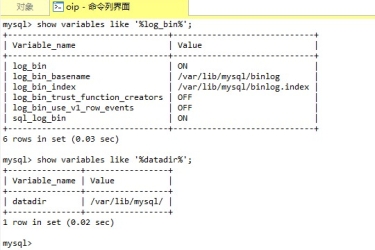ES6的新特性
ES6 简介
ECMAScript 6 简称 ES6,是 JavaScript 语言的下一代标准,已经在2015年6月正式发布了。它的目标是使得 JavaScript 语言可以用来编写复杂的大型应用程序,成为企业级开发语言。
ECMAScript 和 JavaScript 的关系:前者是后者的语法规格,后者是前者的一种实现。
Babel:将ES6代码转为ES5代码 http://babeljs.io/
新特性(2015)
ES6的特性比较多,在 ES5 发布近 6 年(2009-11 至 2015-6)之后才将其标准化。两个发布版本之间时间跨度很大,所以ES6中的特性比较多。 在这里列举几个常用的:
- 类
- 模块化
- 箭头函数
- 函数参数默认值
- 模板字符串
- 解构赋值
- 延展操作符
- 对象属性简写
- Promise
- Let与Const
1.类(class、extends、super )
ES5中最令人头疼的的几个部分:原型、构造函数,继承,有了ES6我们不再烦恼!
ES6引入了Class(类)这个概念。
class Animal {
constructor() {
this.type = 'animal';
}
says(say) {
console.log(this.type + ' says ' + say);
}
}
let animal = new Animal();
animal.says('hello'); //animal says hello
class Cat extends Animal {
constructor() {
super();
this.type = 'cat';
}
}
let cat = new Cat();
cat.says('hello'); //cat says hello
上面代码首先用class定义了一个“类”,可以看到里面有一个constructor方法,这就是构造方法,而this关键字则代表实例对象。简单地说,constructor内定义的方法和属性是实例对象自己的,而constructor外定义的方法和属性则是所有实力对象可以共享的。
Class之间可以通过extends关键字实现继承,这比ES5的通过修改原型链实现继承,要清晰和方便很多。上面定义了一个Cat类,该类通过extends关键字,继承了Animal类的所有属性和方法。
super关键字,它指代父类的实例(即父类的this对象)。子类必须在constructor方法中调用super方法,否则新建实例时会报错。这是因为子类没有自己的this对象,而是继承父类的this对象,然后对其进行加工。如果不调用super方法,子类就得不到this对象。
ES6的继承机制,实质是先创造父类的实例对象this(所以必须先调用super方法),然后再用子类的构造函数修改this。
// ES5
var Shape = function(id, x, y) {
this.id = id,
this.move(x, y);
};
Shape.prototype.move = function(x, y) {
this.x = x;
this.y = y;
};
var Rectangle = function id(ix, x, y, width, height) {
Shape.call(this, id, x, y);
this.width = width;
this.height = height;
};
Rectangle.prototype = Object.create(Shape.prototype);
Rectangle.prototype.constructor = Rectangle;
var Circle = function(id, x, y, radius) {
Shape.call(this, id, x, y);
this.radius = radius;
};
Circle.prototype = Object.create(Shape.prototype);
Circle.prototype.constructor = Circle;
// ES6
class Shape {
constructor(id, x, y) {
this.id = id this.move(x, y);
}
move(x, y) {
this.x = x this.y = y;
}
}
class Rectangle extends Shape {
constructor(id, x, y, width, height) {
super(id, x, y) this.width = width this.height = height;
}
}
class Circle extends Shape {
constructor(id, x, y, radius) {
super(id, x, y) this.radius = radius;
}
}
2.模块化(Module)
ES5不支持原生的模块化,在ES6中模块作为重要的组成部分被添加进来。模块的功能主要由 export 和 import 组成。每一个模块都有自己单独的作用域,模块之间的相互调用关系是通过 export 来规定模块对外暴露的接口,通过import来引用其它模块提供的接口。同时还为模块创造了命名空间,防止函数的命名冲突。
导出(export)
ES6允许在一个模块中使用export来导出多个变量或函数。
export var name = 'Rainbow'
ES6不仅支持变量的导出,也支持常量的导出。
export const sqrt =Math.sqrt;//导出常量
ES6将一个文件视为一个模块,上面的模块通过 export 向外输出了一个变量。一个模块也可以同时往外面输出多个变量。
var name = 'Rainbow';
var age = '24';
export {
name,
age
};
//导出函数
export function myModule (someArg) {
return someArg;
}
导入(import)
定义好模块的输出以后就可以在另外一个模块通过import引用。
import myModule from 'myModule';
import { name ,age } from 'test';
1.一条import 语句可以同时导入默认函数和其它变量。
如:import defaultMethod, { otherMethod } from 'xxx.js';
2.可以为变量起别名
如:import { otherMethod as om } from 'xxx.js'
3.箭头(Arrow)函数
这是ES6中最令人激动的特性之一。 =>不只是关键字function的简写,它还带来了其它好处。箭头函数与包围它的代码共享同一个 this,能帮你很好的解决this的指向问题。有经验的JavaScript开发者都熟悉诸如 var self = this;或 var that =this这种引用外围this的模式。但借助 =>,就不需要这种模式了。
箭头函数的结构
箭头函数的箭头=>之前是一个空括号、单个的参数名、或用括号括起的多个参数名,而箭头之后可以是一个表达式(作为函数的返回值),或者是用花括号括起的函数体(需要自行通过return来返回值,否则返回的是undefined)。
() => 1;
(a, b) => a + b;
() => ([1, 2]);
() => ({
a: 1,
b: 2
});
() => {
alert()
}
setTimeout(() => {
// to do
}, 500)
卸载监听器时的陷阱
错误的做法
class PauseMenu extends React.Component {
componentWillMount() {
AppStateIOS.addEventListener('change', this.onAppPaused.bind(this));
}
componentWillUnmount(){
AppStateIOS.removeEventListener('change', this.onAppPaused.bind(this));
}
onAppPaused(event){}
}
正确的做法
class PauseMenu extends React.Component {
constructor(props) {
super(props)
this._onAppPaused = this.onAppPaused.bind(this)
}
componentWillMount() {
AppStateIOS.addEventListener('change', this._onAppPaused);
}
componentWillUnmount(){
AppStateIOS.removeEventListener('change', this._onAppPaused);
}
onAppPaused(event){}
}
除上述的做法外,babel最新版本允许我们还可以这样做:
class PauseMenu extends React.Component {
constructor(props) {
super(props)
}
componentWillMount() {
AppStateIOS.addEventListener('change', this.onAppPaused);
}
componentWillUnmount(){
AppStateIOS.removeEventListener('change', this.onAppPaused);
}
onAppPaused = (event) => {}
}
需要注意的是:不论是bind还是箭头函数,每次被执行都返回的是一个新的函数引用,因此如果你还需要函数的引用去做一些别的事情(譬如卸载监听器),那么你必须自己保存这个引用。
4.定义函数参数默认值
// ES5 给函数定义参数默认值
function foo(width, height) {
var w = width || 20;
var h = height || 50;
console.log(w, h)
}
// ES6
function foo(width= 20, height = 50) {
console.log(width, height)
}
这样写一般没问题,但当 参数的布尔值为false时,就会有问题了。比如,我们这样调用foo函数:foo(0,'');
因为 0的布尔值为false,这样width的取值将是20。
所以说, 函数参数默认值不仅能使代码变得更加简洁而且能规避一些问题。
5.模板字符串
ES6支持 模板字符串,使得字符串的拼接更加的简洁、直观。在ES6中通过 ${}就可以完成字符串的拼接,只需要将变量放在大括号之中。
ES6反引号 `` 做多行字符串拼接。
//不使用模板字符串:
var str = 'hello, ' + name + ', my name is ' + myName;
//使用模板字符串:
let str = `hello, ${name}, my name is ${myName}`;
另外:includes repeat
// includes:判断是否包含然后直接返回布尔值
let str = 'hahah';
console.log(str.includes('y')); // false
// repeat: 获取字符串重复n次
let s = 'he';
console.log(s.repeat(3)); // 'hehehe'
6.解构赋值
解构赋值语法是JavaScript的一种表达式,可以方便的从数组或者对象中快速提取值赋给定义的变量。
//获取数组中的值
var foo = ["one", "two", "three", "four"];
var [one, two, three] = foo;
var [first, , , last] = foo;
var a, b; [a, b] = [1, 2];
//如果没有从数组中的获取到值,你可以为变量设置一个默认值
var a, b; [a = 5, b = 7] = [1];
//通过解构赋值可以方便的交换两个变量的值
var a = 1;var b = 3; [a, b] = [b, a];
//获取对象中的值
const student = {
name: 'Ming',
age: '18',
city: 'Shanghai'
};
const {name,age,city} = student;
7.延展操作符(Spread operator)
延展操作符...可以在函数调用/数组构造时, 将数组表达式或者string在语法层面展开;还可以在构造对象时, 将对象表达式按key-value的方式展开。
//1.在函数调用时使用延展操作符
function sum(x, y, z) {
return x + y + z
}
const numbers = [1, 2, 3];
console.log(sum.apply(null, numbers));
console.log(sum(...numbers));
//2.构造数组
//没有展开语法的时候,只能组合使用 push,splice,concat 等方法,来将已有数组元素变成新数组的一部分。有了展开语法, 构造新数组会变得更简单、更优雅,和参数列表的展开类似, ... 在构造字数组时, 可以在任意位置多次使用。
const stuendts = ['Jine', 'Tom'];
const persons = ['Tony', ...stuendts, 'Aaron', 'Anna'];
conslog.log(persions)
//获取数组除了某几项的其他项
let num = [1, 3, 5, 7, 9];
let [first, second, ...rest] = num;
console.log(rest); // [5, 7, 9]
//3.数组拷贝
//展开语法和 Object.assign() 行为一致, 执行的都是浅拷贝(只遍历一层)。
var arr = [1, 2, 3];
var arr2 = [...arr];
arr2.push(4);
console.log(arr2)
//4.连接多个数组
var arr1 = [0, 1, 2];
var arr2 = [3, 4, 5];
var arr3 = [...arr1, ...arr2];
var arr4 = arr1.concat(arr2);
//5.在ECMAScript 2018中延展操作符增加了对对象的支持
var obj1 = {foo: 'bar',x: 42};
var obj2 = {foo: 'baz',y: 13};
var clonedObj = { ...obj1 };
var mergedObj = { ...obj1, ...obj2 };
8.对象属性简写
在ES6中允许我们在设置一个对象的属性的时候不指定属性名
//不使用ES6
const name = 'Ming',
age = '18',
city = 'Shanghai';
const student = {
name: name,
age: age,
city: city
};
console.log(student);
//使用ES6
const name = 'Ming',
age = '18',
city = 'Shanghai';
const student = {
name,
age,
city
};
console.log(student);
9.Promise
Promise 是异步编程的一种解决方案,比传统的解决方案callback更加的优雅。它最早由社区提出和实现的,ES6 将其写进了语言标准,统一了用法,原生提供了Promise对象。
//不使用ES6,嵌套两个setTimeout回调函数
setTimeout(function() {
console.log('Hello');
setTimeout(function() {
console.log('Hi')
},
1000)
},
1000);
//使用ES6
var waitSecond = new Promise(function(resolve, reject) {
setTimeout(resolve, 1000)
});
waitSecond.then(function() {
console.log("Hello");
return waitSecond
}).then(function() {
console.log("Hi")
});
10.支持let与const
在之前JS是没有块级作用域的,const与let填补了这方便的空白,const与let都是块级作用域。
//使用var定义的变量为函数级作用域
{
var a = 10
}
console.log(a);
//使用let与const定义的变量为块级作用域
{
let a = 10
}
console.log(a); // 报错
11. Generators
生成器( generator)是能返回一个迭代器的函数。
生成器函数也是一种函数,最直观的表现就是比普通的function多了个星号*,在其函数体内可以使用yield关键字,有意思的是函数会在每个yield后暂停。
这里生活中有一个比较形象的例子。咱们到银行办理业务时候都得向大厅的机器取一张排队号。你拿到你的排队号,机器并不会自动为你再出下一张票。也就是说取票机“暂停”住了,直到下一个人再次唤起才会继续吐票。
迭代器:当你调用一个generator时,它将返回一个迭代器对象。这个迭代器对象拥有一个叫做next的方法来帮助你重启generator函数并得到下一个值。next方法不仅返回值,它返回的对象具有两个属性:done和value。value是你获得的值,done用来表明你的generator是否已经停止提供值。继续用刚刚取票的例子,每张排队号就是这里的value,打印票的纸是否用完就这是这里的done。
// 生成器
function *createIterator() {
yield 1;
yield 2;
yield 3;
}
// 生成器能像正规函数那样被调用,但会返回一个迭代器
let iterator = createIterator();
console.log(iterator.next().value); // 1
console.log(iterator.next().value); // 2
console.log(iterator.next().value); // 3
迭代器对异步编程作用很大,异步调用对于我们来说是很困难的事,我们的函数并不会等待异步调用完再执行,你可能会想到用回调函数,(当然还有其他方案比如Promise比如Async/await)。
生成器可以让我们的代码进行等待。就不用嵌套的回调函数。使用generator可以确保当异步调用在我们的generator函数运行一下行代码之前完成时暂停函数的执行。
那么问题来了,咱们也不能手动一直调用next()方法,你需要一个能够调用生成器并启动迭代器的方法。就像这样子的:
function run(taskDef) {
// taskDef 即一个生成器函数
// 创建迭代器,让它在别处可用
let task = taskDef();
// 启动任务
let result = task.next();
// 递归使用函数来保持对 next() 的调用
function step() {
// 如果还有更多要做的
if (!result.done) {
result = task.next();
step();
}
}
// 开始处理过程
step();
}




